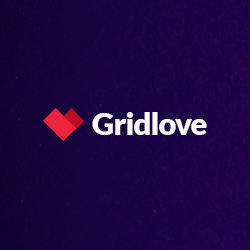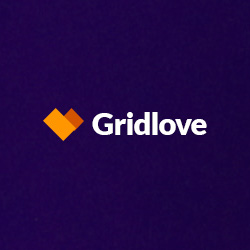- Company: Zara
- CEO: Oscar Garcia Maceiras
- Year founded: 1975
- Headquarters: Arteixo, Spain
- Number of Employees: 51,000
- Type: Private (Fully-owned Subsidiary of Inditex).
- Annual Revenue (2024): €27.778 Billion
Products & Services: Clothing | Shoes | Swimwear | Beauty Products | Bags & Accessories | Home Décor | Fragrances | Lighting | Furniture | Lighting | Rugs | Bedding | Secondhand Clothing Service
Competitors: H&M | Shein | Uniqlo | Gap | ASOS | Gucci | Nike | Forever 21 | Adidas | Urban Outfitters | Primark | Fashion Nova | Topshop | Boohoo | Macy’s | Mango | Chanel | Louis Vuitton | Ralph Lauren
Did you know? Amancio Ortega Gaona originally wanted to name the brand Zorba but settled for Zara because Zorba was taken by another company.
Zara is a fast-fashion brand founded in 1975 by Amancio Ortega Gaona. The founder opened the first Zara shop in central A Coruña, in Galicia, Spain. Zara’s mission, business approach, values, and sustainability goals drive growth and success. In 2024, Zara’s brand value was around $17.8 billion. Its top rival, the H&M brand, was valued at $13.6 billion. Zara has outperformed its competitors in recent years. [1]
Zara’s parent company, Inditex, is largest global apparel distribution groups. Its brands include Zara, Zara Home, Pull&Bear, Massimo Dutti, Bershka, Stradivarius, and Oysho. Customers can rely on Zara for clothing, shoes, perfumes, bags, and accessories, and Zara Home for lighting, furniture, home décor, lighting, rugs, and bedding. Zara and Zara Home had 3,140,105 selling space as of Mar 2025. Both operate under the Zara brand. In FY2024, Zara’s annual sales increased by 6.6% to €27.778 billion. Its parent company, Inditex, generated €38.6 billion in revenue, up 7.5% from 2023. [2]
To understand why Zara dominates the fast-fashion sector, here is a comprehensive analysis of its mission statement, values, and sustainability goals:
Zara’s Mission Statement
Zara doesn’t have an explicit mission statement. The brand uses Inditex’s approach to guide its operations and growth strategy. Inditex states,
We take risks when we see a better way – for our customers, planet, and fashion to move the world forward – through the most inspiring experience. [3]
Zara’s mission statement is defined by its founder’s business strategy. Amancio Ortega Gaona built his empire on two rules: “Give customers what they want, and get it to them faster than anyone else.” [4]
Here is our analysis of Zara’s mission:
1. Meet consumers’ fashion needs
Zara strives to fulfill consumers’ fashion needs. Its customer-centric design approach ensures its products meet customer expectations and preferences. The fast-fashion giant incorporates customer feedback into design, enhancing satisfaction and loyalty. It also uses localization strategies to bridge the gap between global brand identity and local market relevance. For example, Zara tailors its products, store designs, and pricing to meet unique consumer needs and preferences in different markets.
Zara aims to meet consumers’ needs by refreshing and expanding its offerings. It introduced Zara Home to deliver fashion-forward home goods. In 2024, the brand launched Zara Man to offer an exclusive men’s fashion line. [5]
2. Deliver fashionwear quicker than competitors
Zara is known for its ultra-fast-fashion business model, influenced by Ortega’s observation that fashion is like the fish trade. Ortega’s philosophy is to offer fresh products and swiftly discard unsold items. The brand aims to deliver fashion-forward apparel, shoes, accessories, and home goods quicker than its rivals. Most clothing companies need four to six months to design, manufacture, and deliver a new garment. However, Zara shrank that cycle to two to three weeks on average.
Zara’s vertically integrated model ensures its stores stock the clothes that customers want at that time. The company manufactures products in or near its top-performing markets and moves collections fast in small batches. New Zara fashionwear takes 10-15 days to reach the stores, faster than the industry norm. By the late 1990s and 2000s, the brand’s approach became the template for fast fashion globally. Zara treats fashion like fish – get it out fresh, sell it quick, and never hoard old inventory. [6]
3. Offer affordable products
Zara aims to deliver affordable, fashion-forward products to consumers. The brand achieves this mission by minimizing production and distribution costs. For example, Zara produces seasonal items in Morocco, complex designs in Europe, accessories in China, and jeans and t-shirts in Bangladesh. Its parent company manufactures 76% of its products in Europe and 24% in Asia and Africa. This strategy reduces distribution costs because items are produced in or near countries with most Zara stores, such as Spain, France, and Italy. [7]
4. Support consumers’ sustainable lifestyles
Zara strives to advance its customers’ sustainability efforts. The brand faces public backlash for its waste and resource use. In Oct 2024, Zara launched a secondhand clothing service in the US. Customers can use the program to resell pre-loved Zara pieces, access garment repair services, and donate items to charities. The pre-owned clothing platform promotes conscious shopping and encourages customers to give their clothes a second life. [8]
Checkout: Largest Global Clothing Stores Companies by Revenue
Zara’s Values
Zara is united with other Inditex brands by shared values, including entrepreneurial spirit, non-conformism, innovation, inclusion, humility, and ethics. These values guide the parent company’s over 160,000 employees from 170 nationalities. The brand believes fashion is a tool for self-expression, identity inspiration, and community empowerment. This philosophy inspires Zara to constantly evolve, innovate, and leverage fashion to create positive change in people’s lives, societies, and cultures globally. [9]
How does Zara live by its values?
1. Entrepreneurial spirit
Zara pioneered fast fashion thanks to its disruptive business ideas. Its founder launched the Zara brand to capitalize on the demand for “freshly baked clothes.” His entrepreneurial spirit set Zara on a path to success. Zara concentrates on three areas to meet consumer needs: shorter lead times, lower quantities, and more styles. For example, the brand produces around 12,000 styles yearly. Providing more choices increases the chance of getting it right with the consumer. The brand expanded into Portugal, the US, France, Mexico, Greece, Belgium, Sweden, Malta, Cyprus, Norway, and Israel Mexico after conquering its Spanish domestic market. In Sep 2010, Zara launched its online boutique to tap into the emerging e-commerce trend. Zara is a global fast-fashion leader thanks to its entrepreneurial spirit. [10]
2. Non-conformism
Zara values uniqueness and individualism. The brand lives by this value within and beyond its company walls. For example, Zara doesn’t outsource manufacturing to Asia to save on costs like most fashion brands. Inditex, Zara’s parent company, produces around 50% of its goods in company-owned factories. It executes the critical stages (design and cutting) in a dozen factories near its headquarters and outsources sewing to suppliers. This strategy allows Zara to respond to consumer demand quickly and cost-effectively. The brand is also an outlier thanks to its ultra-fast turnaround time of two weeks.
3. Innovation
Zara values innovative ideas, tech-driven solutions, and out-of-the-box thinking. The brand’s commitment to innovation is apparent in its ability to mold as per the changing trends and deliver high-quality products. For example, Zara uses data analytics to personalize shopping experiences and provide tailored product recommendations and content based on customer preferences. Its Radio Frequency Identification Technology (RFID) helps track item locations. Zara also offers a seamless omnichannel experience, allowing customers to shop in stores, online, or through its mobile app. These innovative strategies enhance convenience, customer engagement, and loyalty. [11]
4. Inclusion
Zara believes its teams drive the brand’s transformation and growth. It values an inclusive workplace where all employees can achieve their full potential. The brand promotes diversity and inclusion in its workforce and provides equal opportunities to all team members. As of 2023, Inditex’s workforce was 74% women and 26% men. Zara strives to build diverse teams whose members feel secure in an inclusive professional environment and bring unique perspectives and experiences. In Dec 2023, Zara’s parent company was listed in the Financial Times-Statista 2024 Diversity Leaders Index for the fifth time. It was the second-highest-ranking company in the retail sector. [12]
5. Humility
Zara encourages employees to be humble and straightforward. This value helps the brand understand and meet consumers’ fashion needs. “Humility keeps you in a permanent state of listening, a permanent understanding of what your customers want,” explained Inditex CEO Oscar Garcia Maceiras. Humility, caution, and ambition accompanied Zara on its long road from a small clothing workshop to a global fast-fashion leader. [13]
6. Ethics
Zara believes the how matters. The brand values ethical business operations. However, Zara has experienced several ethical lapses in recent years. In Dec 2023, the brand faced criticism over its “The Jacket” collection campaign. Palestinian and pro-Palestinian social media users called for a boycott, claiming that the campaign mocked the death of Palestinians. [14]
Checkout: Largest Global Clothing Manufacturer Companies by Market Cap
Zara’s Sustainability Goals
Zara is committed to building a sustainable business that empowers people and protects the environment. The brand implemented sustainability at different stages across its value chain, from product design to material selection and sourcing, manufacturing, logistics, and store and warehouse management. It has set ambitious sustainability goals, including:
- Achieve net-zero emissions by 2040.
- Reduce its emissions by more than 50% by 2030.
- Use 100% lower-impact textile fibers by 2030.
- Use 100% linen and polyester from preferred sources by 2025.
- Reach 3 million people across its supply chain via the “Worker at the Center” strategy by 2025.
- Expand circularity services like Zara Pre-Owned in key markets.
- Reduce its supply chain’s water consumption by 25% by 2025. [15]
How is Zara progressing on its sustainability goals?
Zara’s sustainability strategy focuses on its people, suppliers, sourcing and manufacturing processes, customers, communities, and the environment. Its socially responsible approach seeks to create workplaces that respect and promote human and labor rights. The brand has developed programs to identify the needs of workers and their environment. For example, Zara updated the Worker in the Center strategy to promote employees’ well-being and support vulnerable groups. Its sustainability approach includes diversity and inclusion. As of 2023, Zara’s workforce had 174 nationalities.
Zara uses tried-and-tested strategies to achieve its sustainability goals. For example, the brand expanded the Zara Pre-Owned platform to the US in Oct 2024 after launching it in 16 countries, including Italy, the UK, and France. Customers can use the service to repair, resell, and donate Zara products. The platform is part of the brand’s circularity goals to attain net-zero emissions by 2040. [16]
Zara has reduced its emissions by 88% from the 2018 baseline. The brand is changing its raw materials to achieve its sustainability goals. Lower-impact textile fibers in Zara’s garments increased to 73% in 2024, inching closer to 100% by 2030. In 2024, Zara Women released a new collection using Circ fibers from textile waste. “Our latest collection with Zara creates a model for widespread adoption of sustainable materials,” said Peter Majeranowski, CEO at Circ. [17]
References
- Statista Research Department (2024, Oct 10). Global brand value comparison of H&M and Zara from 2010 to 2024. Statista
- Inditex (2025, Mar 12). Inditex: FY2024 Results. Inditex.com
- Our Approach. Inditex.com
- Walt, V. (2013, Jan 8). Meet Amancio Ortega: The third-richest man in the world. Fortune
- Chloe, G. (2024, Dec 19). Zara localization: The key to Zara’s global expansion. GTE Localize
- Laher, R. (2025, Mar 17). Zara’s Fast-Fashion Supply Chain: Myth of the “Fishing” Insight vs. Real. LinkedIn
- 36Kr (2024, Nov 13). Inside Zara’s pivot: From fast fashion to affordable designer style. KR Asia
- Rawat, A. (2024, Sep 14). Zara launched a secondhand clothing service in the US in October 2024. The Organic Magazine
- Our Ethical Commitment. Inditex.com
- Roll, M. (2022, Nov 20). The Secret of Zara’s Success: A Culture of Customer Co-creation. MartinRoll.com
- Renascence (2024, Aug 29). Lessons from Zara’s Customer Experience (CX) Strategy. Renascence.io
- Inditex (2023, Dec 30). Social: Annual Report 2023. Inditex.com
- Do Better Team (2023, Nov 7). “The how matters”: The lesson from Inditex CEO Oscar Garcia Maceiras. Esade.com
- Intervention Bureau (2023, Dec 12). Fast fashion giant Zara under fire for ethical lapses. News Intervention
- Zara (2023, Dec 30). Inside Join Life. Zara.com
- Talwar, K. (2024, Oct 21). Zara Launches Its Repair and Resell Platform in the US. WWD
- RTIH Staff (2024, Aug 16). Zara and Circ continue sustainability tie-up with a collection made from recycled poly cotton blended textiles. Retail Tech Innovation Hub
- Featured Image by Rennim

























Add comment